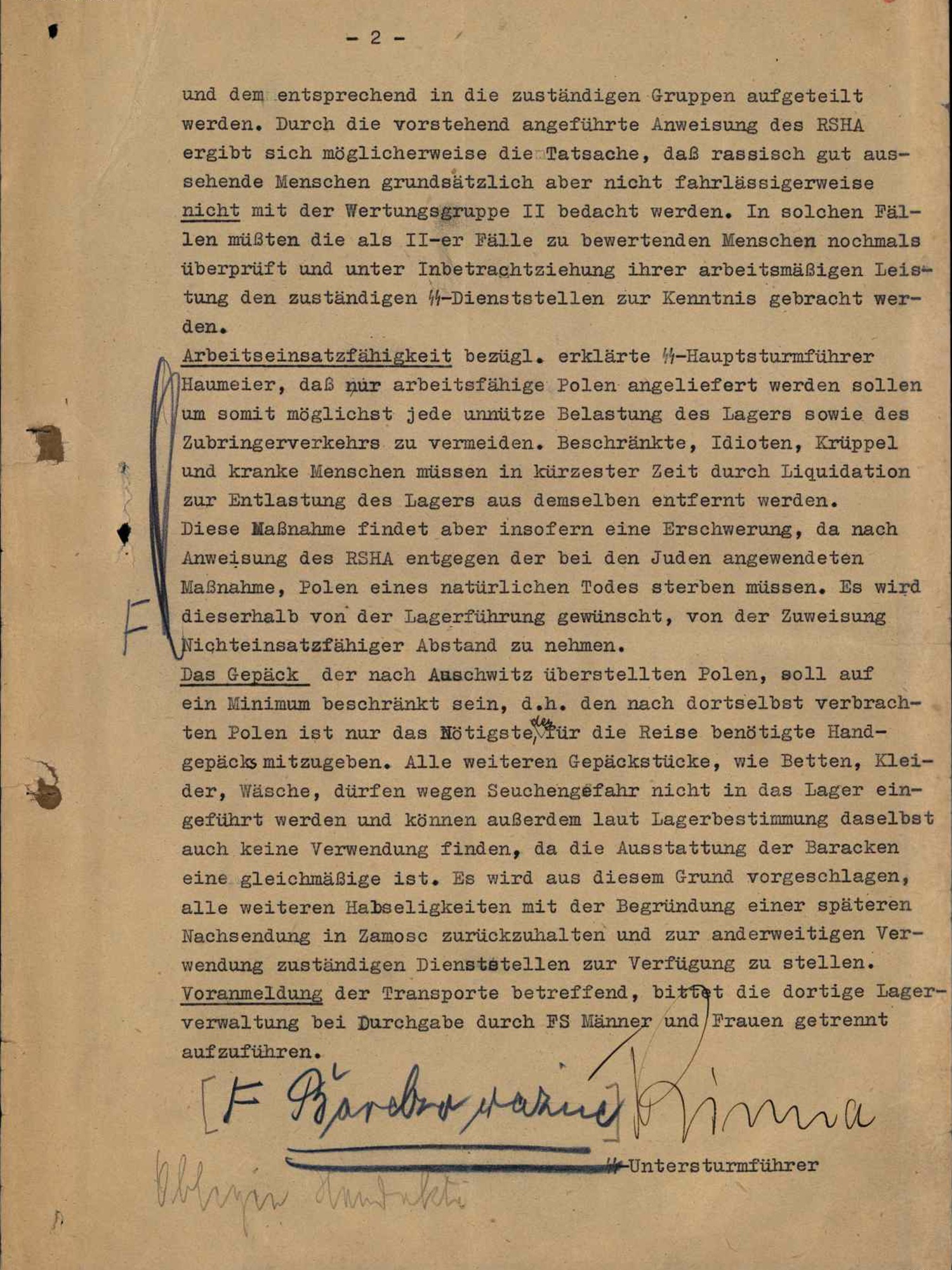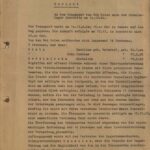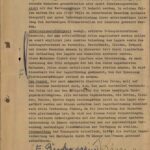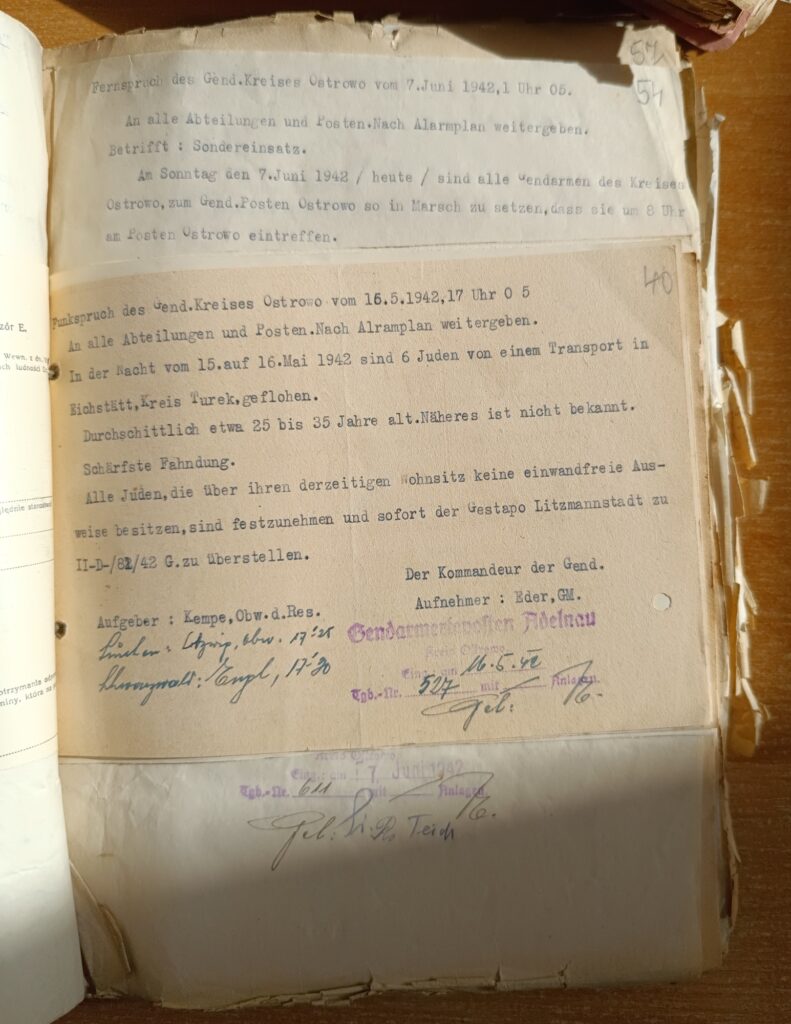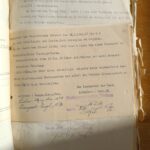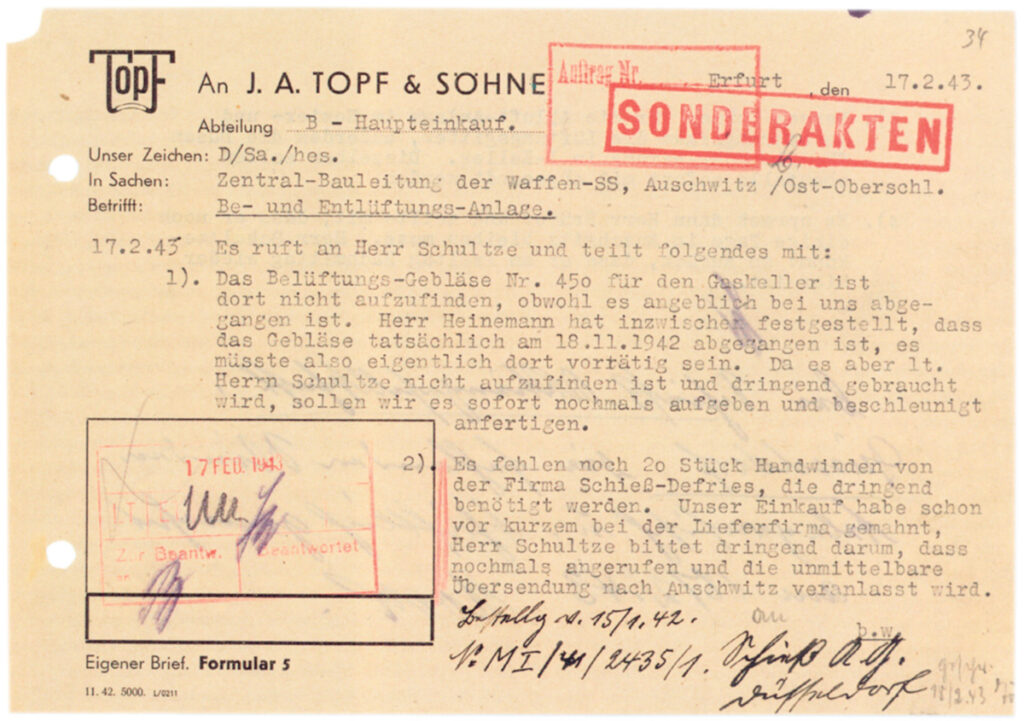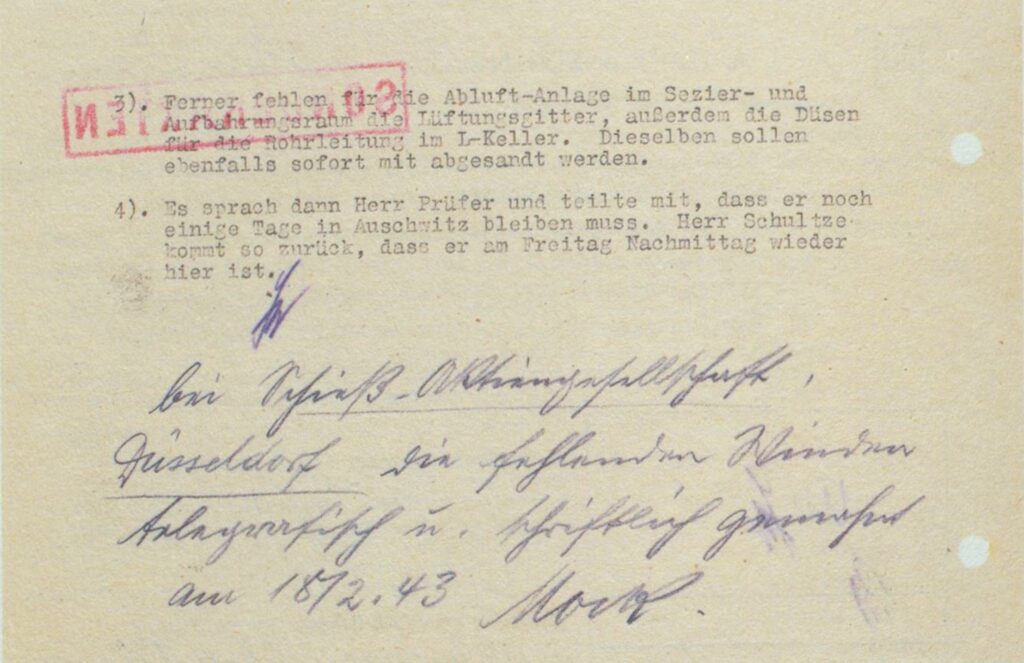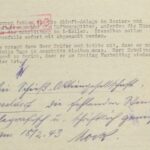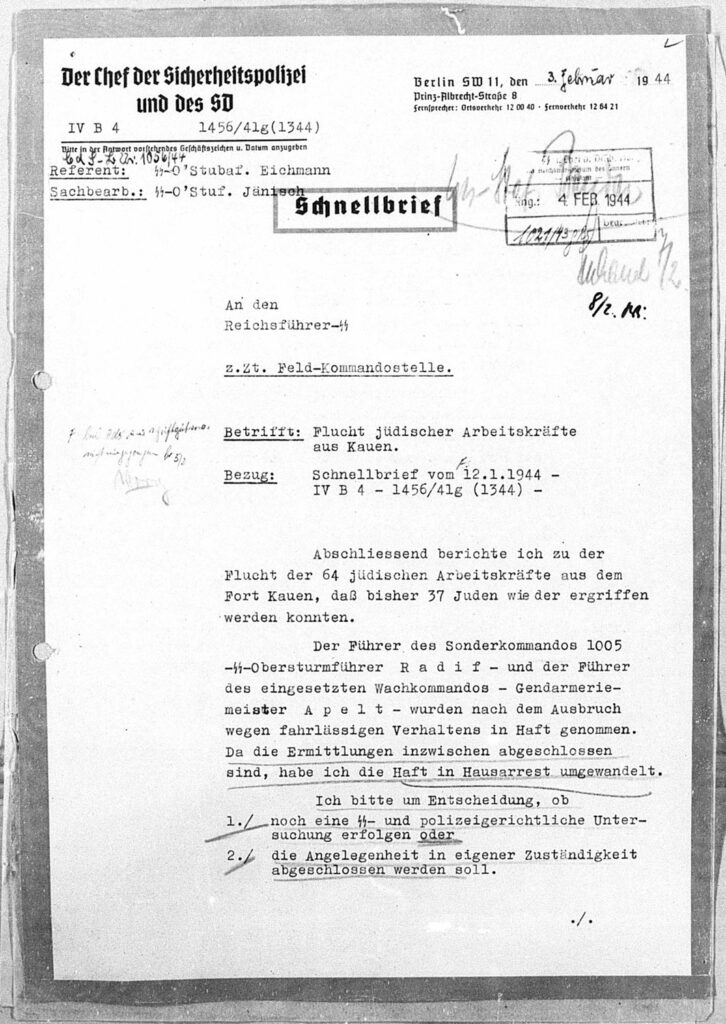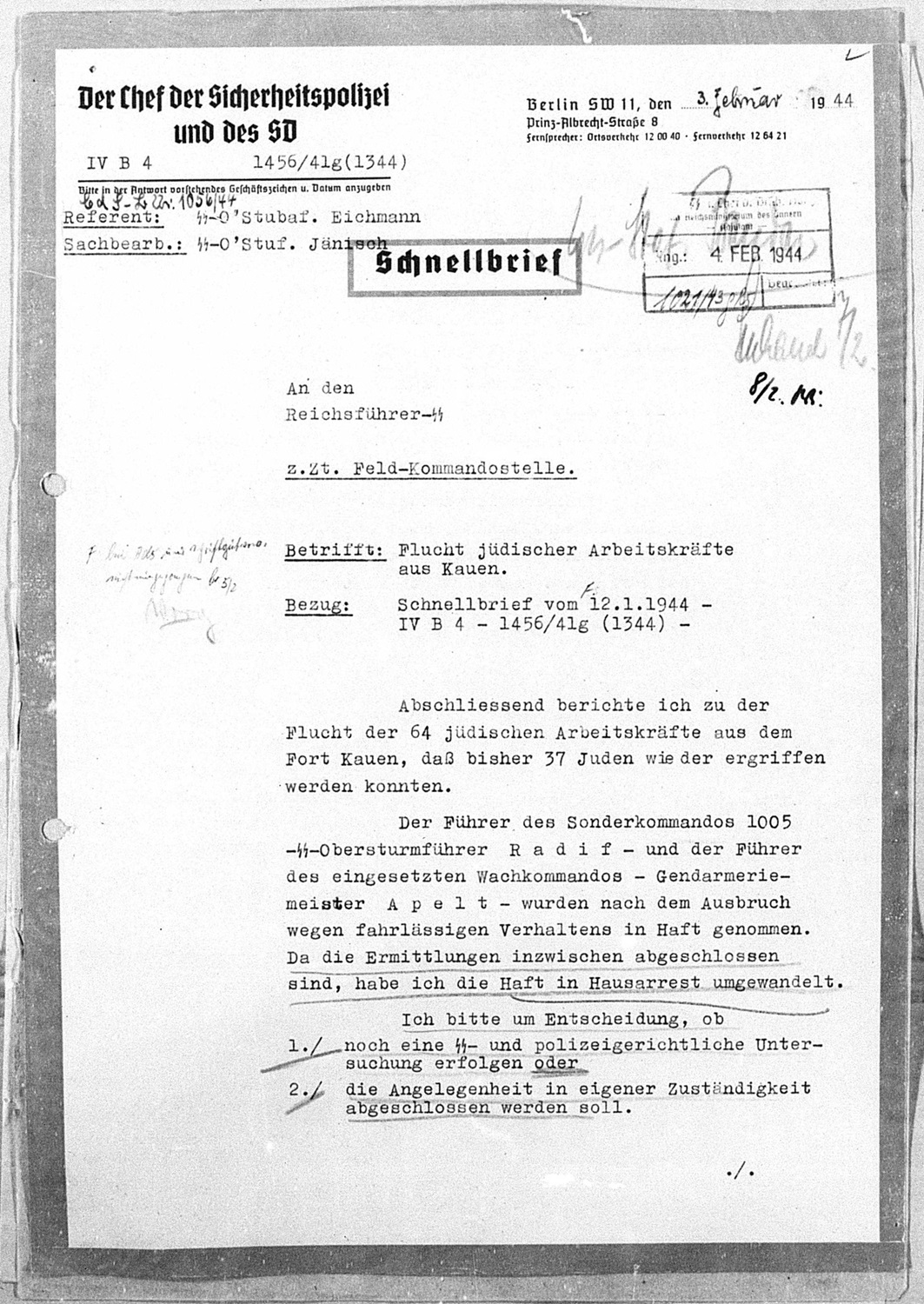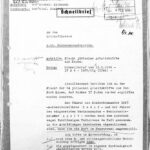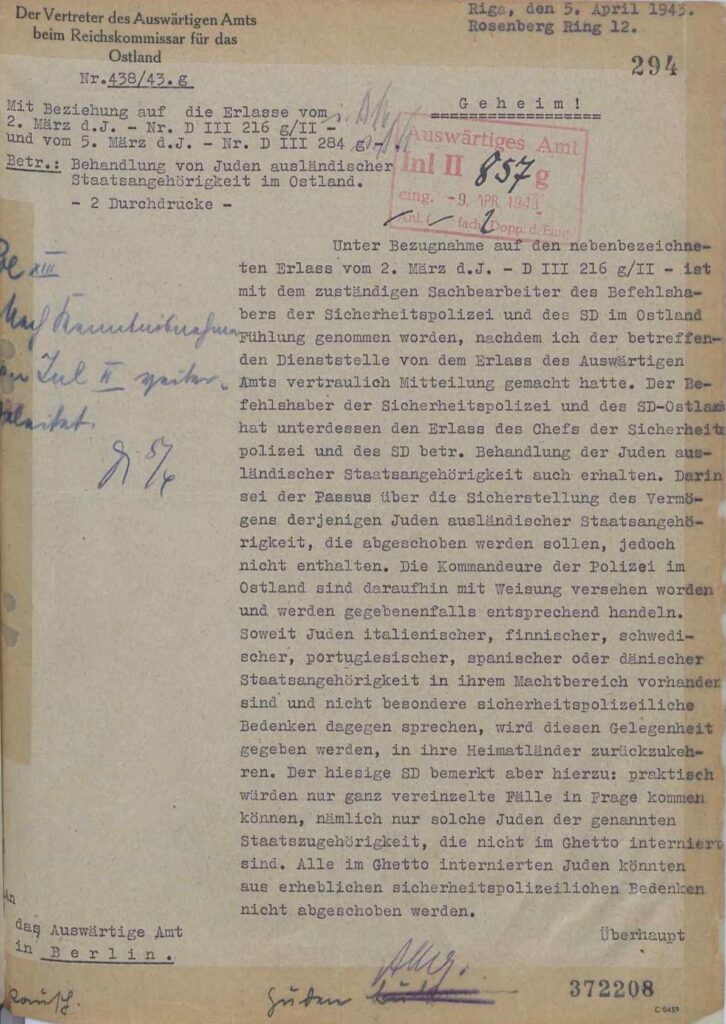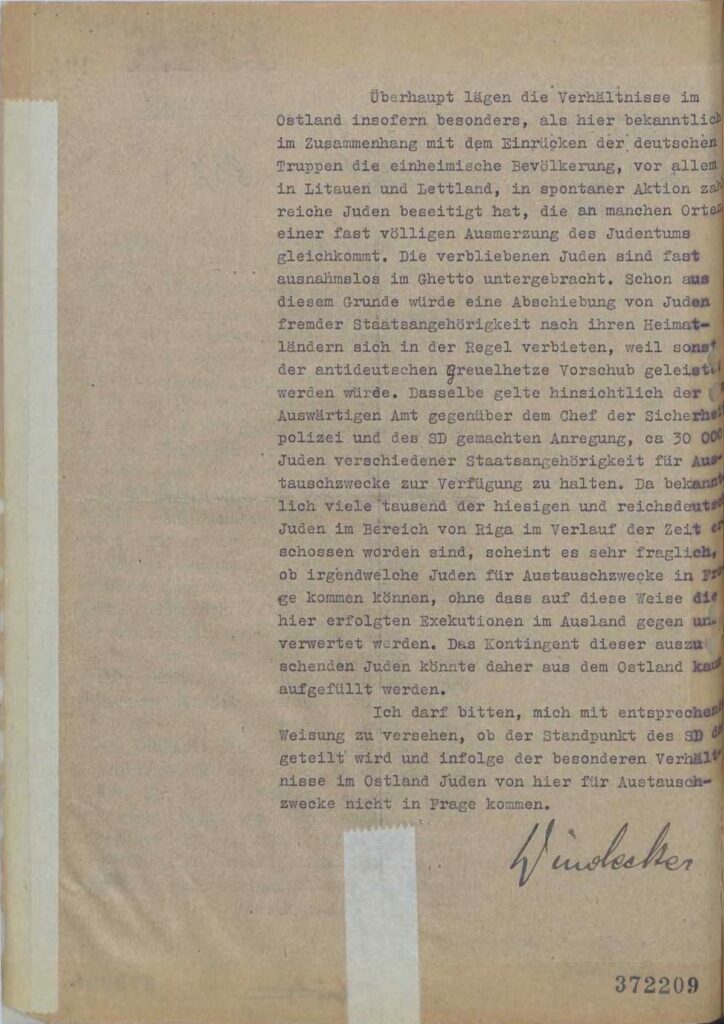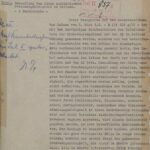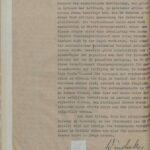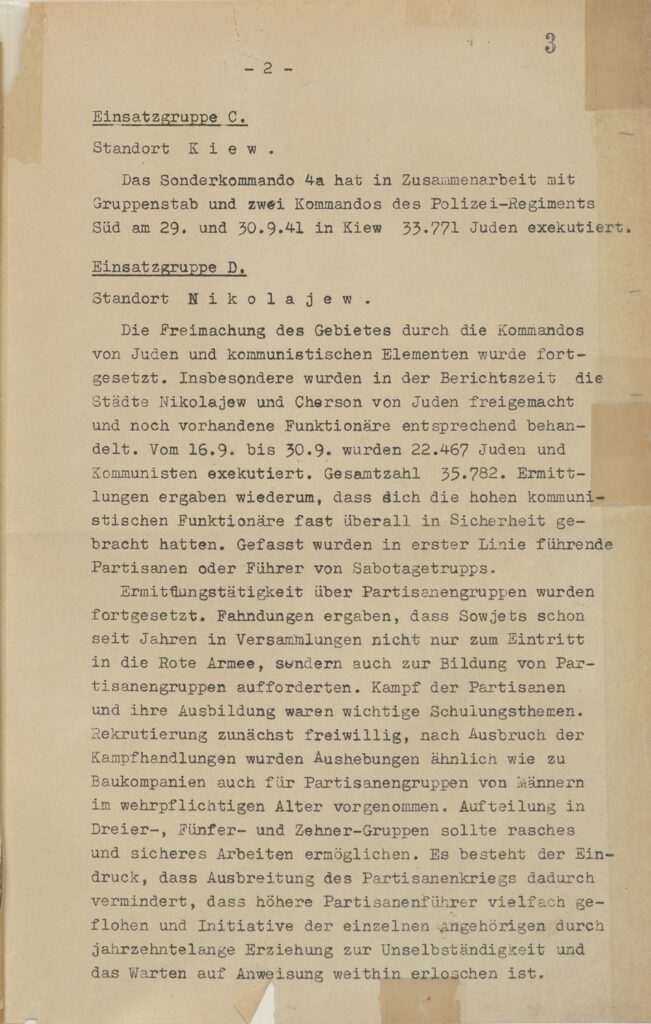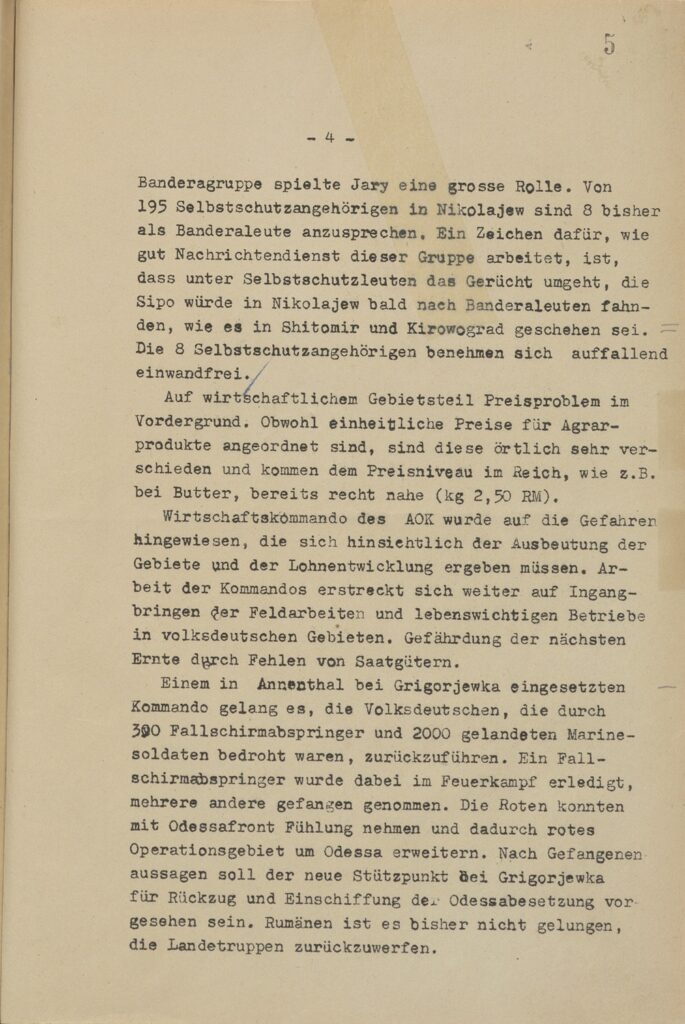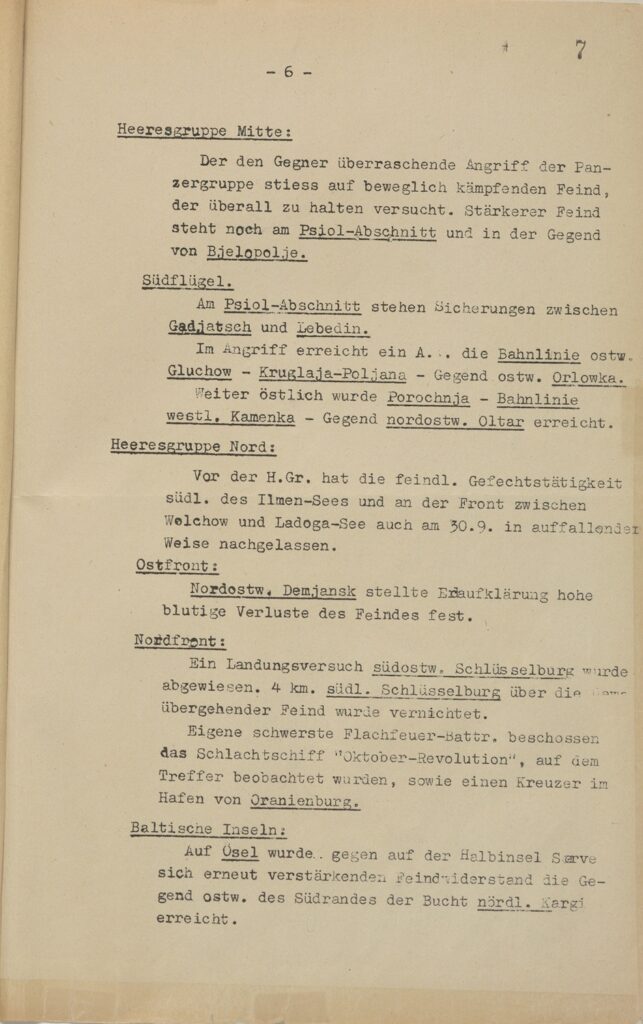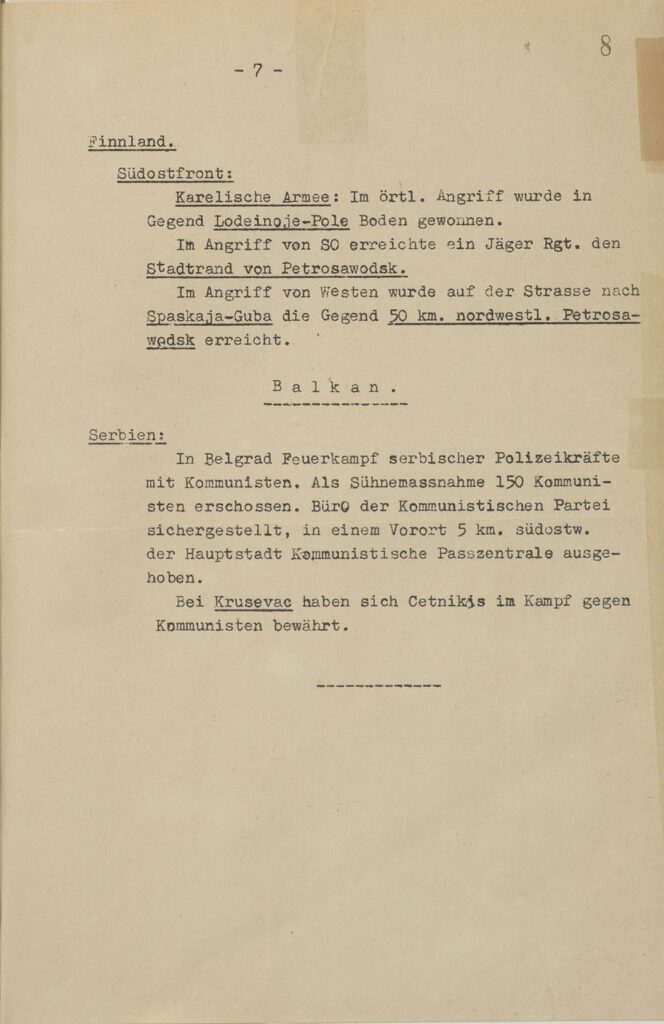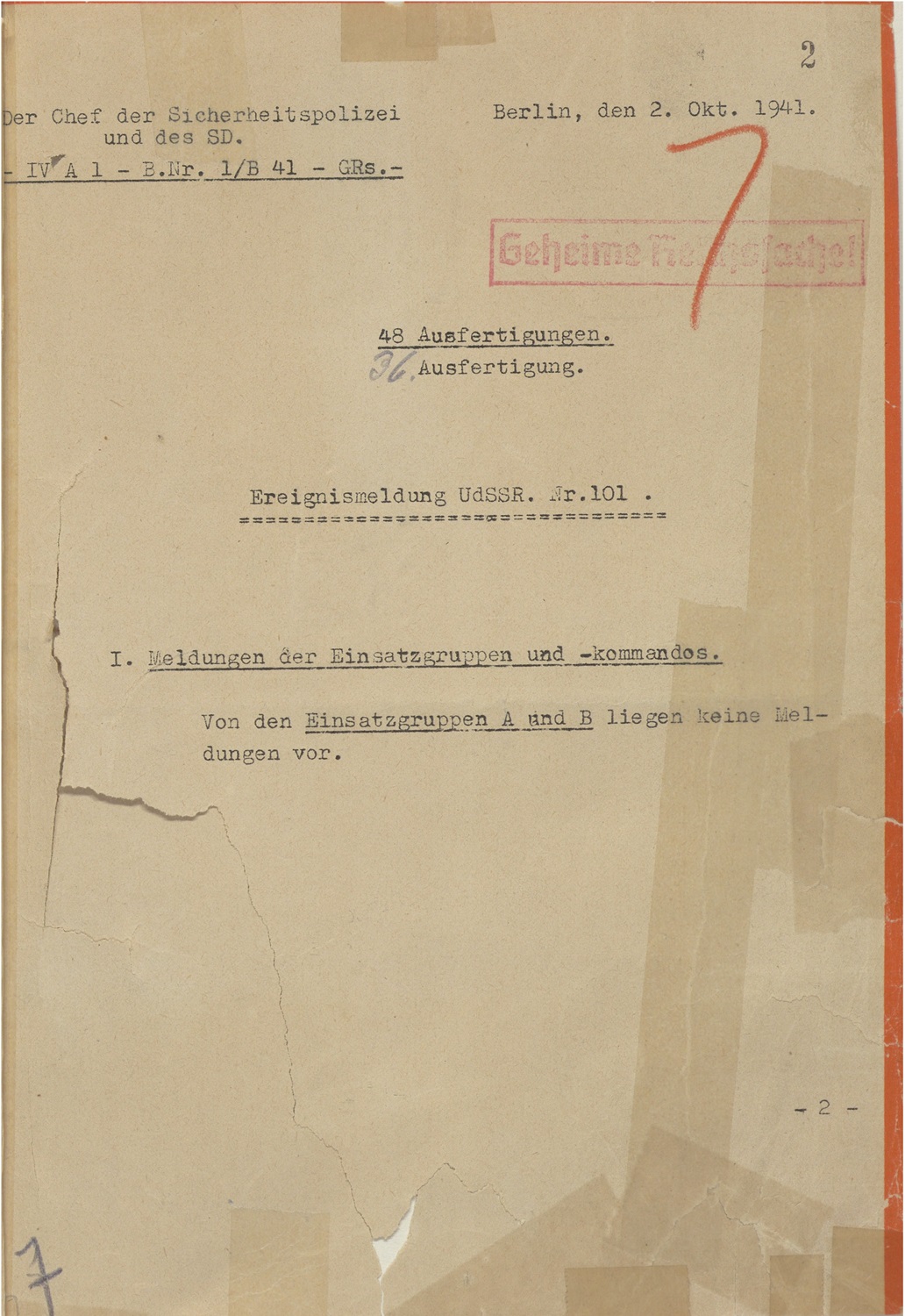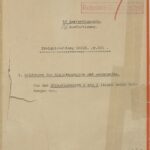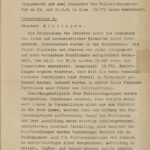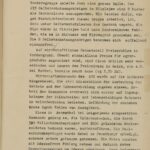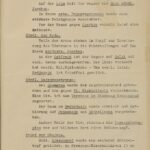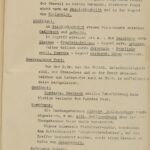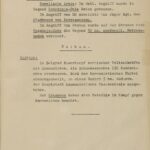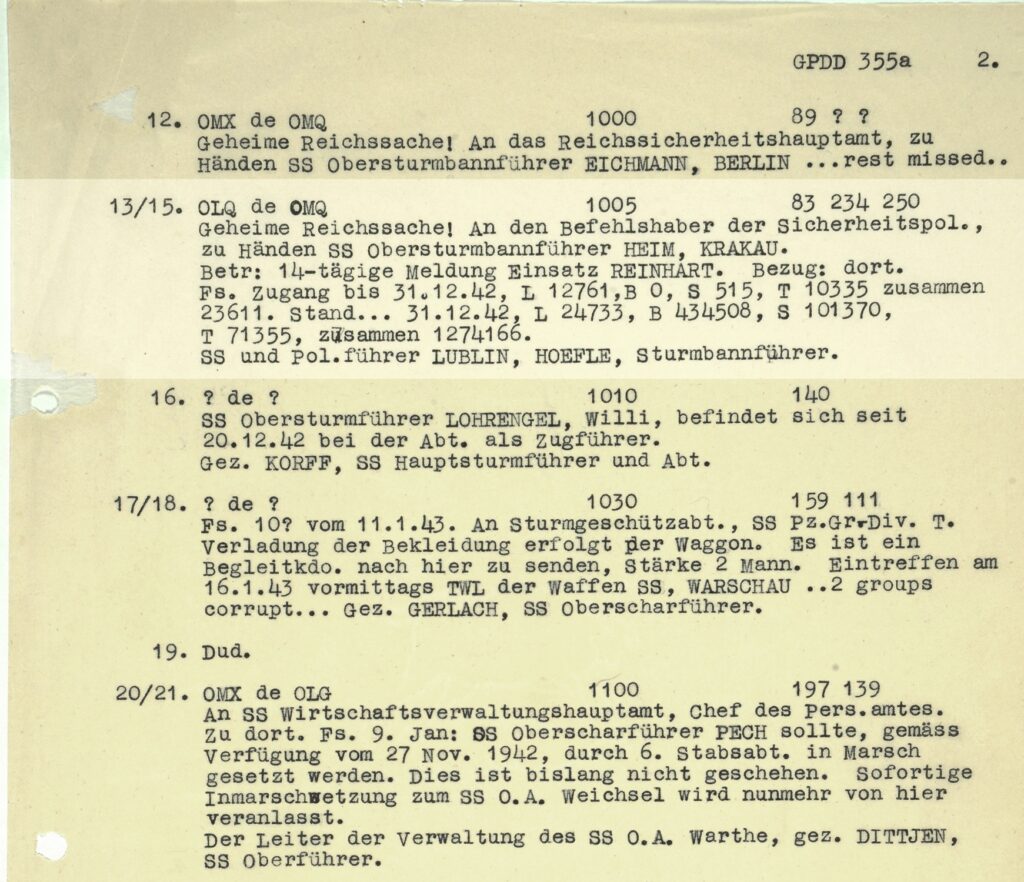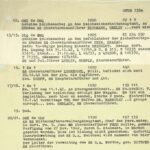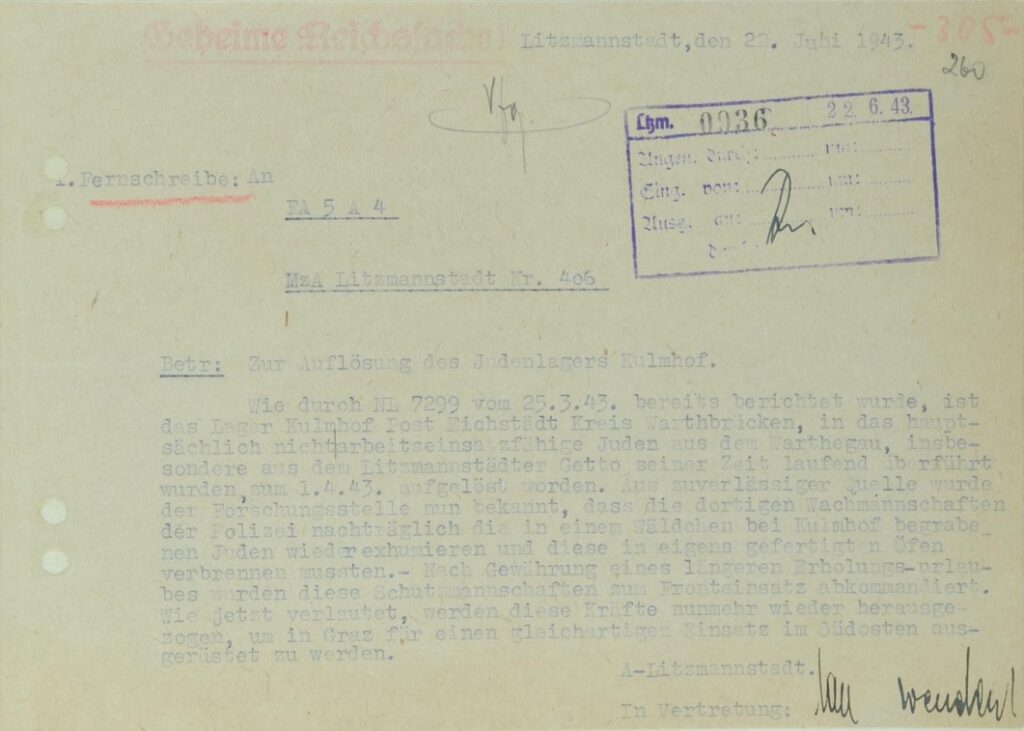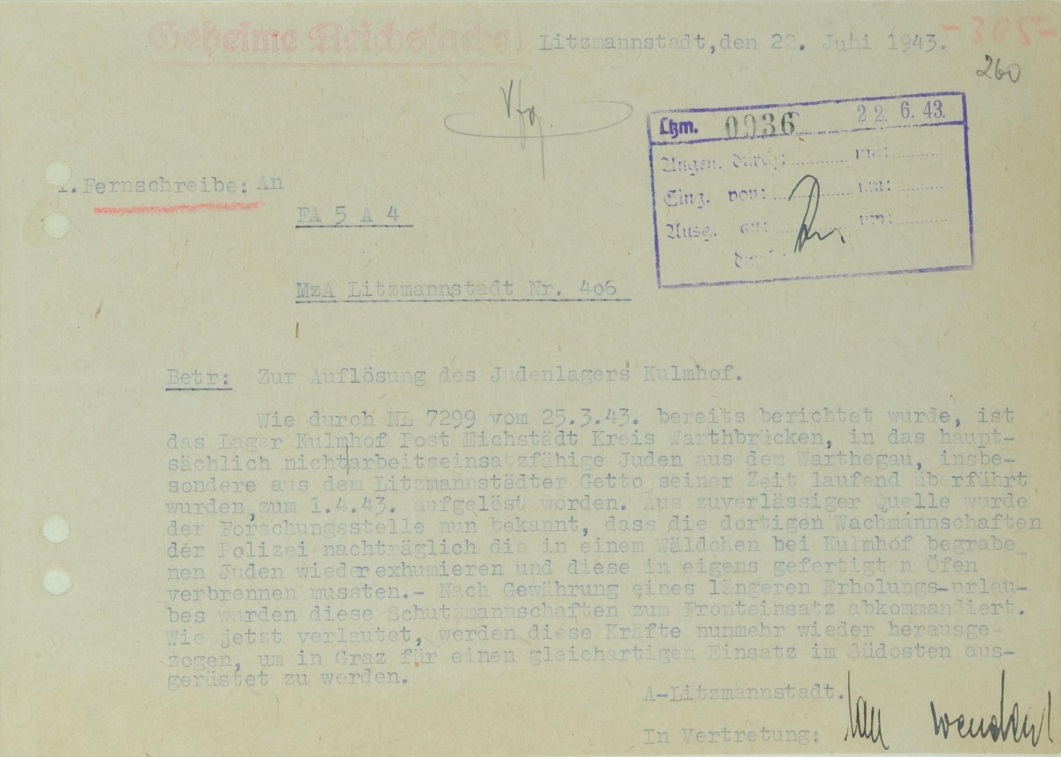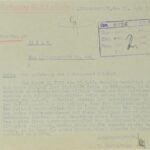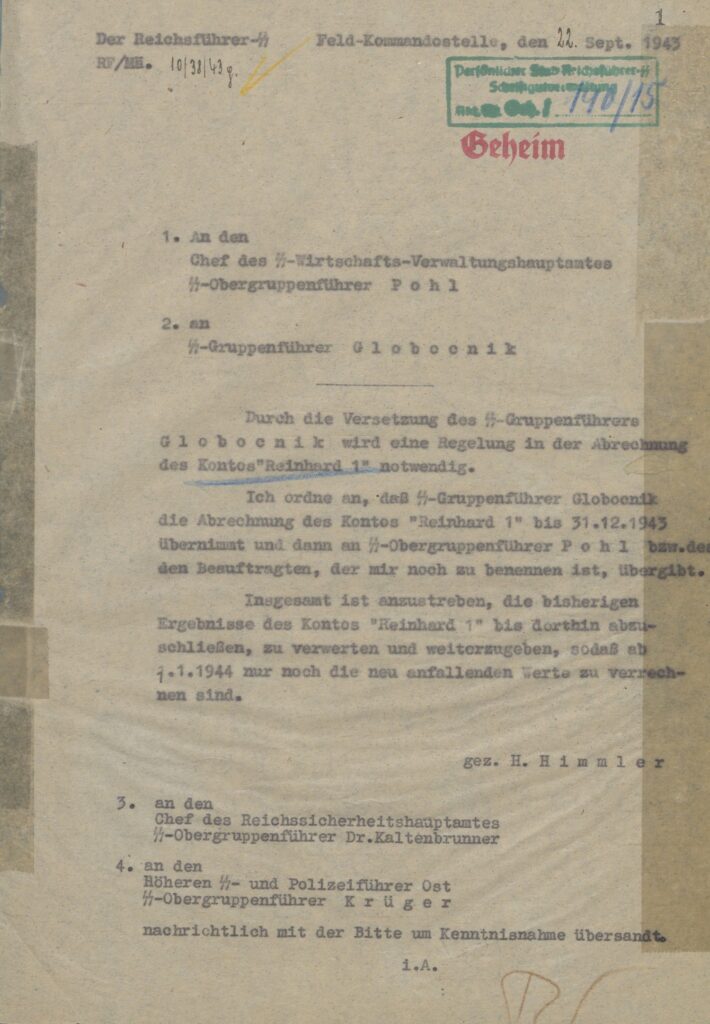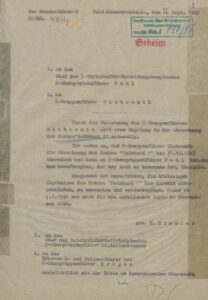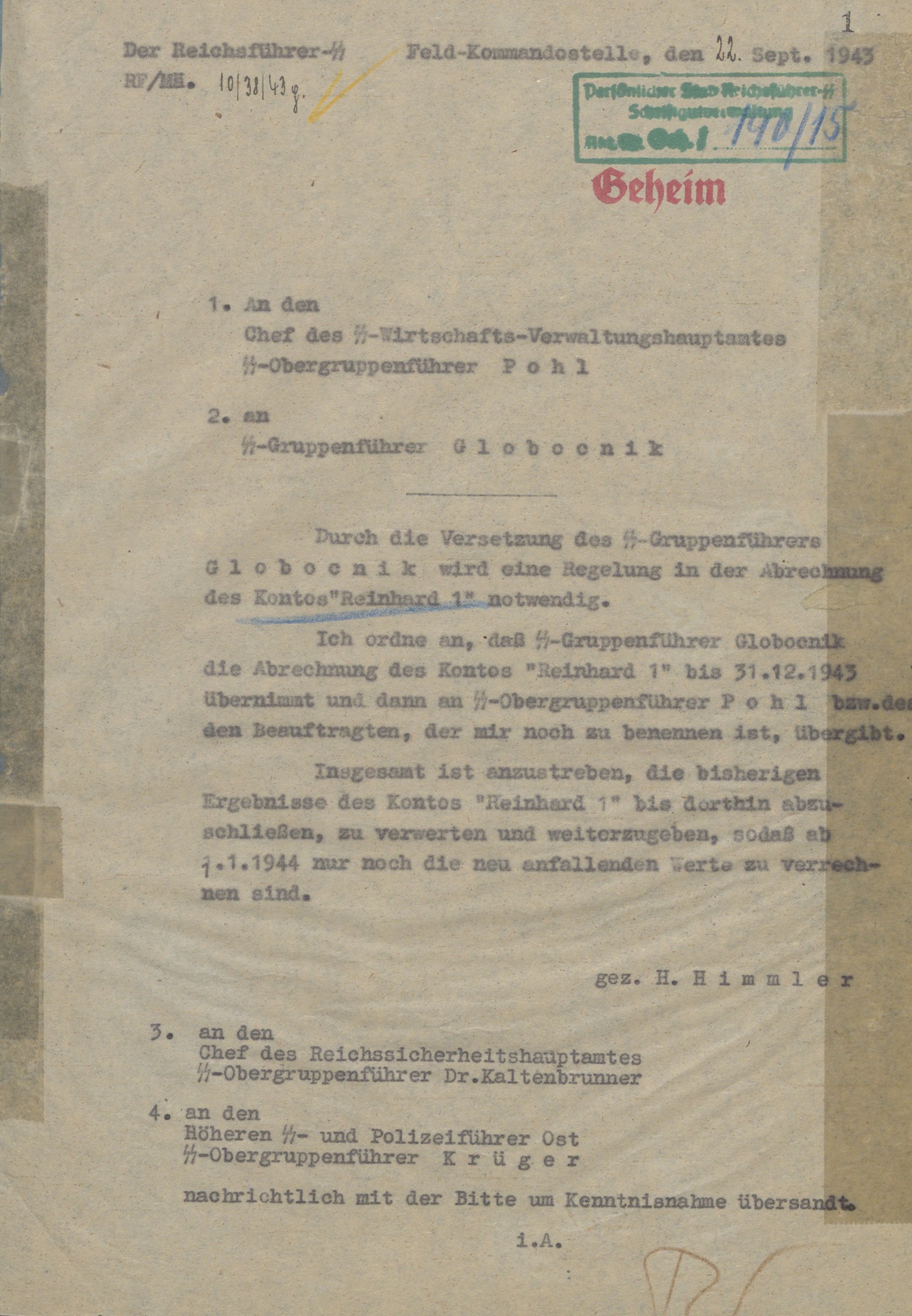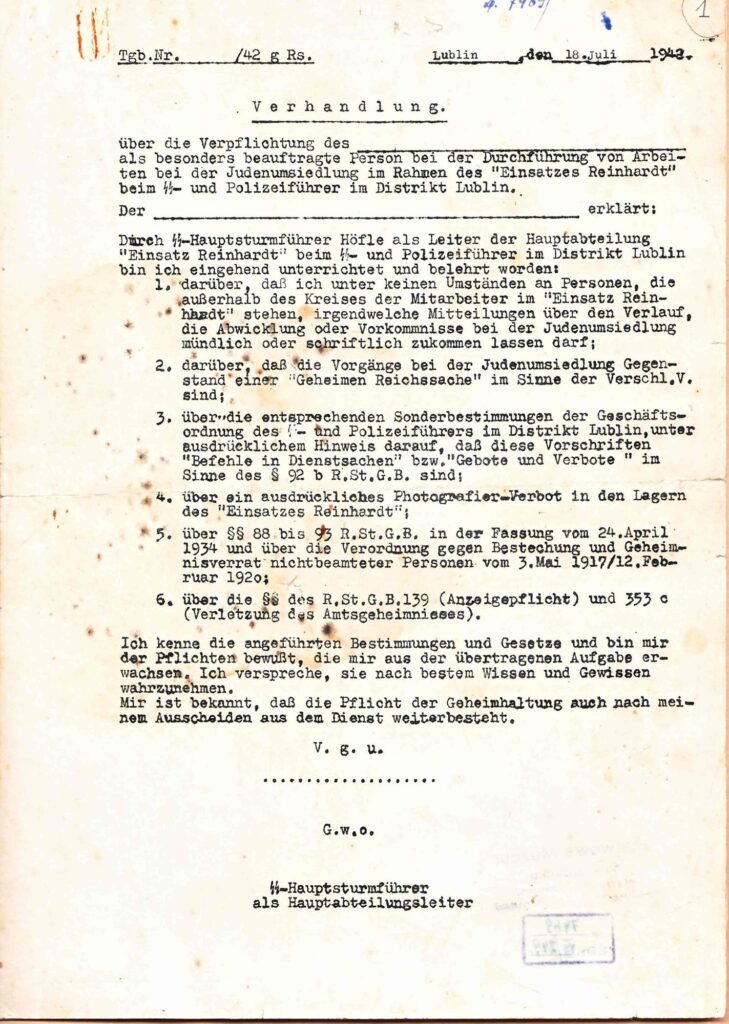1942-12-16 Kinna’s Report on Auschwitz Extermination Policy: “According to RSHA orders, Poles, unlike Jews, must die a natural death”
Introduction
In late 1942, several thousand Poles were deported from Zamosc, Poland, following Nazi racial classifications that determined their fate. This process was part of Himmler’s directive on November 12, 1942, to make Zamosc the “first German settlement area in the Generalgouvernement”1. Those deemed racially “inferior” were sent to Auschwitz, with a transport of 644 individuals departing Zamosc on December 10, 1942. On December 16, SS-Untersturmführer Heinrich Kinna from the migration central offic, wrote a report on the transport. He summarized his conversation with Auschwitz deputy commandant Hans Aumeier2, who disclosed that “Imbeciles, idiots, cripples, and sick people must be removed from the camp promptly through liquidation to unburden the camp. This measure, however, encounters complications, as according to RSHA orders, Poles, unlike Jews, must die a natural death.”
Documents

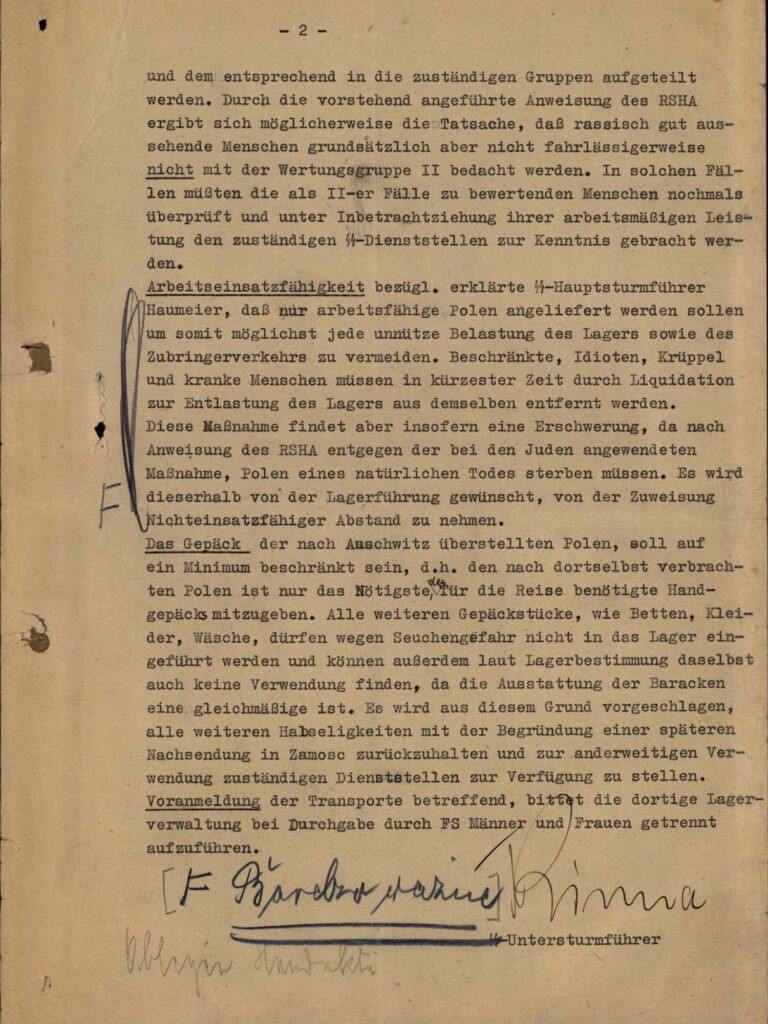
Heinrich Kinna
SS-Untersturmführer
Zamosc, den 16.12.42
Bericht
zu dem Transport von 644 Polen nach dem Arbeitslager Auschwitz am 10.12.42.
Der Transport wurde am 10.12. d.Js. 16.00 Uhr in Zamosc auf den Weg gegeben. Die Ankunft erfolgte am 12.12. in Auschwitz nach 23.00 Uhr.
Von den 644 Polen entfernten sich insgesamt 14 Personen.
3 Personen, und zwar:
Bialy Karoline geb. Batzdorf, geb. 14.1.00
” Sohn Czeslaw, geb. 17.2.26
Sedzimirska Michalina, geb. 19.2.22
ergriffen auf offener Strecke während einer Fahrtunterbrechung vor dem Verschiebebahnhof in Krakau mit Hilfe polnischer Bahnbeamten, die die verschlossene Wagentür öffneten, die Flucht.
Die Flucht selbst wurde durch die herrschende Dunkelheit begünstigt und erfolgte zu dem Zeitpunkt, zu dem der Kontrollposten sich am anderen Ende des Zuges befand. Die sofort eingeleitete Suchaktion blieb erfolglos. Die restlich fehlenden 11 Personen müssen, sofern die bei der Verladung in Zamosc erfolgte Zählung stimmt, aus dem fahrenden Zug und zwar aus den oberen Lucken der Güterwagen gesprungen sein. Es wird deswegen vorgeschlagen, künftig die nicht mit Türen versehene Oberlucken durch Stacheldraht zu sichern. Die Übernahme in Auschwitz erfolgte am 13.12.42, eine namentliche Verlesung fand nicht statt.
Die Überführung des Transportes verlief abgesehen von der eigenmächtigen Entfernung der 14 Personen und ohne Inbetrachtziehung der Verspätung, planmäßig.
Auftragsgemäß wurde mit dem Vertreter des Lagerkommandanten, SS-Hauptsturmführer Haumeier, über die Wünsche der Lagerführung und die Möglichkeit von den in den Transporten erscheinenden II-er Fällen gesprochen.
II-er Fälle betreffend wurde darauf hingewiesen, daß nach Anweisung vom Reichssicherheitshauptamt, die in Zamosc eingelieferten Polen familienweise einer Gesamtwertung unterworfen und dem entsprechend in die zuständigen Gruppen aufgeteilt werden. Durch die vorstehend angeführte Anweisung des RSHA ergibt sich möglicherweise die Tatsache, daß rassisch gut aussehende Menschen grundsätzlich aber nicht fahrlässigerweise nicht mit der Wertungsgruppe II bedacht werden. In solchen Fällen müßten die als II-er Fälle zu bewertenden Menschen nochmals überprüft und unter Inbetrachtziehung ihrer arbeitsmäßigen Leistung den zuständigen Dienststellen zur Kenntnis gebracht werden.
Arbeitseinsatzfähigkeit bezügl. erklärte SS-Hauptsturmführer Haumeier, daß nur arbeitsfähige Polen angeliefert werden sollen um somit möglichst jede unnütze Belastung des Lagers sowie des Zubringerverkehrs zu vermeiden. Beschränkte, Idioten, Krüppel und kranke Menschen müssen in kürzester Zeit durch Liquidation zur Entlastung des Lagers aus demselben entfernt werden. Diese Maßnahme findet aber insofern eine Erschwerung, da nach Anweisung des RSHA entgegen der bei den Juden angewendeten Maßnahme, Polen eines natürlichen Todes sterben müssen. Es wird dieserhalb von der Lagerführung gewünscht, von der Zuweisung Nichteinsatzfähiger Abstand zu nehmen.
Das Gepäck der nach Auschwitz überstellten Polen, soll auf ein Minimum beschränkt sein, d.h. den nach dortselbst verbrachten Polen ist nur das Nötigste, für die Reise benötigte Handgepäcks mitzugeben. Alle weiteren Gepäckstücke, wie Betten, Kleider, Wäsche, dürfen wegen Seuchengefahr nicht in das Lager eingeführt werden und können außerdem laut Lagerbestimmung daselbst auch keine Verwendung finden, da die Ausstattung der Baracken eine gleichmäßige ist. Es wird aus diesem Grund vorgeschlagen, alle weiteren Habseligkeiten mit der Begründung einer späteren Nachsendung in Zamosc zurückzuhalten und zur anderweitigen Verwendung zuständigen Dienststellen zur Verfügung zu stellen. Voranmeldung der Transporte betreffend, bittet die dortige Lagerverwaltung bei Durchgabe durch FS Männer und Frauen getrennt aufzuführen.
[Unterschrift]
SS-Untersturmführer
Heinrich Kinna
SS-Untersturmführer
Zamosc, December 16, 1942
Report
on the transport of 644 Poles to the Auschwitz labor camp on December 10, 1942.
The transport was dispatched on December 10 of this year at 16:00 from Zamosc. Arrival took place on December 12 in Auschwitz after 23:00.
Out of the 644 Poles, a total of 14 individuals escaped.
Three individuals, namely:
Bialy Karoline, née Batzdorf, born January 14, 1900
” Sohn Czeslaw, born February 17, 1926
Sedzimirska Michalina, born February 19, 1922
escaped during a travel break near the freight yard in Krakow with the assistance of Polish railway workers, who opened the locked carriage door.
The darkness prevailing at the time aided the escape, which occurred when the guard was stationed at the other end of the train. The search operation initiated immediately afterward was unsuccessful. The remaining 11 missing individuals must, assuming the count made during loading in Zamosc was accurate, have jumped from the moving train through the upper hatches of the freight cars. Therefore, it is suggested that in the future, the upper hatches without doors be secured with barbed wire. The transfer in Auschwitz took place on December 13, 1942, without a roll call by name.
Aside from the unauthorized departure of 14 persons and disregarding the delay, the transport proceeded according to plan.
As ordered, a discussion took place with the camp commandant’s representative, SS-Hauptsturmführer Haumeier, regarding the requests of the camp leadership and the handling of “Category II cases” appearing among the transported individuals.
Concerning “Category II cases,” it was indicated that, as per the instructions of the Reich Main Security Office, Poles brought to Zamosc are to be evaluated as family units and accordingly sorted into the appropriate groups. Due to this RSHA directive, it is possible that people of good racial appearance might not negligently but systematically be excluded from Category II classification. In such cases, individuals considered for Category II should be re-evaluated and, considering their work performance, be reported to the relevant departments.
Regarding work suitability, SS-Hauptsturmführer Haumeier stated that only Poles fit for work should be delivered to avoid any unnecessary burden on the camp and transport. Imbeciles, idiots, cripples, and sick people must be removed from the camp promptly through liquidation to unburden the camp. This measure, however, encounters complications, as according to RSHA orders, Poles, unlike Jews, must die a natural death. Therefore, the camp leadership requests the avoidance of assigning unfit individuals.
The luggage of Poles transported to Auschwitz should be limited to a minimum, i.e., they should be allowed to carry only the essential hand luggage needed for the journey. All additional luggage, such as beds, clothes, and linens, should not be introduced into the camp due to the risk of disease and lack of utility, as the barracks have uniform furnishings. For this reason, it is suggested that all additional belongings be retained in Zamosc with the pretense of later forwarding, and to be made available to the appropriate departments for alternative use. Regarding transport notifications, the camp administration requests that men and women be listed separately when relayed by telegram.
[Signature]
SS-Untersturmführer
Archival reference:
IPN GK 69/169
Further Reading:
The Kinna Report – German Document on the Killing of Unfit Jews in Auschwitz
Agnieszka Jaczyńska, “The SS Sonderlaboratorium. The Zamosc region – the first settlement area in the Generalgouvernment, 1942-1943”, Lublin 2012, p. 423

